This marks the most successful recruiting year in 5 years and significantly exceeds the 80% target given by the Public Accounts Committee in January 2019, say the Ministry of Defence.
The Ministry of Defence have provided an update on progress on the priorities set by the Secretary of State for each of the Service Chiefs and whether these have changed due to, or been impacted by, the Covid-19 pandemic, the following outlines the Secretary of State’s priority for the Army and the progress made towards them.
The following response was published today as a response from the Ministry of Defence to follow-up questions to the Defence Secretary following a session of the Defence Committee on the 23rd April.
“A successful recruiting year combined with a revised, programmatic approach to retention is starting to yield positive results. As at 1 April 2020 the Army’s Full Time Trained Strength was 79,010 (+310 since 1 October 2019) and the Full Time Trade Trained Strength was 73,720 (+50 since 1 January 2020). Regular Workforce Growth has remained a priority for the Army throughout the COVID-19 period, building on the positive gains on both inflow and retention achieved during 19/20.
During recruiting year 2019/20, the Regular Soldier intake to the Untrained Army was 9,067, achieving 96% of the end of year target. This marks the most successful recruiting year in 5 years and significantly exceeds the 80% target given by the Public Accounts Committee in January 2019. Of note, the number of candidates loaded to Basic Training courses surpassed the target set and the shortfall in Basic Training Starts was only due to the final intakes of the recruiting year being postponed due to Covid-19. The Army also exceeded the Direct Entry Officer target of 620.
The Army lost approximately five training weeks between pausing non-essential activity and restarting Basic Training on 11 May 20. At present, Basic Training is constrained to around 50% of capacity by social distancing and other Force Health Protection measures. Current planning assumes we will not return to full loading until at least September. In order to achieve the planned 9,867 Regular soldier Basic Training Starts by 31 March 2021, the Army is shortening some non-Infantry courses (primarily by increasing the length of the training day and by training over some weekends) and maximising the use of available accommodation. Officer Training resumed at Sandhurst from 17 May, achieving full capacity a week later primarily because individual rooms support increased social distancing. With some minor changes to course construct, Regular and Reserve Officer training remains on target.
Plans to restart face to face recruitment are progressing. Applicants to join the Army are completing much more of their application online, with virtual support provided by both military and civilian recruiters. Although it is too early to assess whether this change in approach is affecting candidates’ success in getting through the pipeline, initial feedback has been positive and early indications are that applications are notably higher that at the same time last year. Recruitment processes will continue to be reviewed and improved to incorporate any lessons learned from virtual activity during lockdown. All Assessment Centres have now reopened, albeit at reduced capacity, with plans being developed to increase that capacity as soon as possible.
Prior to COVID-19 the Voluntary Outflow (VO) rate for soldiers had decreased from a peak of 6.9% to 6.7%. The Army continues to aim to reduce Involuntary Outflow (IVO) through medical and discipline and has reduced Other Rank Medical IVO from 2.1% to 1.4% in the last 12 months.
In response to COVID-19 the Army rapidly introduced a number of measures to retain service personnel for longer. Measures included enabling Notice to Terminate (NTT) and Premature Voluntary Retirement (PVR) withdrawals and extension of service where requested. It is too soon to assess the impact of COVID-19 on the Army’s Workforce Strength in the long-term but early indicators suggest a decrease in Notice to Terminate (NTT) submissions and an increase in NTT withdrawals and extension requests which are likely to reduce VO in the short term.”


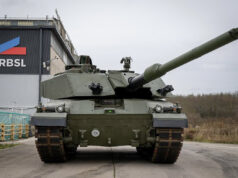
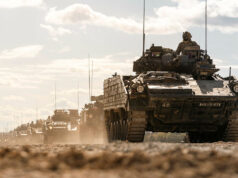
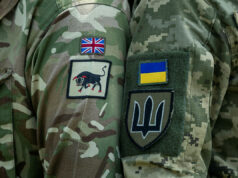
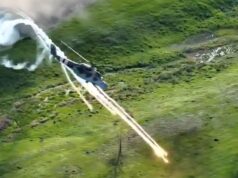
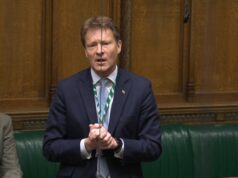
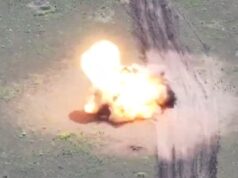

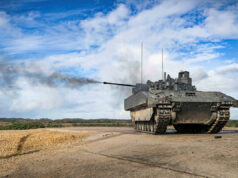
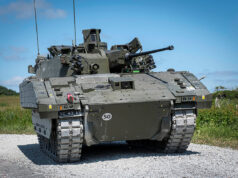


Good news. i wonder how recruitment for the Reserves is going?Their target strength was for 30 000 Army reservists and this was meant to mitigate the drop in Regular Army numbers
Their target strength was actually 35,000.
Trained strength target was 30,100. The actual Trained Strength was 27,300 as at 1 April 2020. This is an increase of 230 (0.9 per cent) since 1 April 2019.
A very good point Geoff. When they cut to 82,000 they made much of the one Army concept and the increase in the ‘new’ Army Reserve to give a whole force structure of 120,000. I thought at the time this was very ambitious. I bet you the total Army Reserve are nowhere near the required numbers – and how many of the reserves who do exist are fully trained, attend all training days & camps and complete their bounty?
Love to see the figures but I bet they are buried at the back of a filing cabinet somewhere safe from public view.
It tells you how many active reserves are fully trained. 27,000 odd
To be honest as long as there aren’t major cuts to defence coming (I doubt there will be) to defence, the next few years could be a golden opportunity for not just army but armed forces recruiting in general.
A lot of young peoplecare going to leave school at 16 or 18 into a weaker jobs market. Greater unemployment and fewer available jobs leaves a lot of these kids wondering what the hell they will do. Once it is safe to do so all 3 branches of the armed forces need to start going back into secondary schools to promote armed forces careers, as well as TV and online ads.
Also, not just for school leavers, but people in their 20s and 30s who may find themselves redundant, or even if not, could join reserves to get some extra cash.
To be honest if not for the fact that I have a false hip that precludes me from joining up, I’d join either army or RAF reserve – the extra cash would definitely come in handy for my mortgage!
That’s a big one-the hip op that is, but I am sure the Army could still use guys like you Steve in roles other than right on the front line. Think about Nelson!! 🙂
ps and of course Douglas Bader!! An old friend of mine who was an RAF maintenance techy met him when he was an 11 year old-a dream come true he had thought, but said he was a grumpy old shit who made him cry!
Staggering around on tin legs would piss off the Pope!
🙂 🙂 🙂 i suppose he had cause to be grumpy Herodotus
Cheers mate. I certainly would if I could. I did actually apply for the army Int Corps in 2012 but was rejected on medical grounds due to the hip – it wasn’t a false one then but they said it was too high a chance of it going bad. It did go bad months later so I guess they knew what they were talking about lol!
If they let people in with hip replacements I’d be signing up for reserves today.
To be fair, even in the Int Corps you’d be in clip with a bad hip. They still Tab like everyone else, especially in Phase 1.
I’m thinking about joining the reserves. I’m just working on my fitness first, this stay in doors for months has made me put on weight!!
Honestly Cam, fitness is the one thing that you can fix, whatever force you’re thinking of joining, they like a bit of running and the 1.5 miles is a standard one. Might be crap if its not your thing but get out and run. Not to the ‘just making it time’, but so you can do it comfortably. Same with press ups/sit ups etc, doesn’t cost you anything and just have a go, see what you can manage then try and beat yourself at it until you get to a reasonable level. Running is the biggy though. If you can get this sorted before you go, its one less thing to worry about. Good luck.
Agreed. It sucks and as someone who finds it hard to exercise alone believe me I know the struggle, but right now is probably the best time for it. You’re not stuck indoors, you can go out and run, as long as you keep 2m away from everyone, so take this opportunity to go out and get it licked.
The hardest part is getting out the door.
I’m the only person I know who has managed to lose weight during COVID. A stone so far!
What does it matter when the target is lower each year?
We used to have 80,000 soldiers now we’re nearing 70,000. It’s an absolute joke.
We used to have 120,000 not long ago.
We should have a standing army of 100,000. With China and Russia getting more aggressive, and Brazil as well as India, becoming superpowers in this century, we need that number as the bare minimum.
We’ve left the EU (thank god) we’re not going to be part of the EU Army which is perhaps why successive Govts. have been cutting forced. We can pull £160-200 Billion out of our back pocket for a bloody railway line but nothing for our Armed Forces eh?
We should have 150-200,000 regular soldiers+marines really. We have the money, none of the political will.
I agree, we would be in a world of pain if a large war broke out! We need 100,000 full time army and 50,000 reserve. Maybe even a high readiness second reserve of ex army liable for call up if needed of another 50,000, they should have guns and gear in wearhouses ready to equip just incase. I ant see that happening tnough, I like the idea of a large national Guard though. We don’t have any reserve tanks or Helicopters or anything!. We would be screwed.
The French have increased their number I think. They went from around 100,000 to 120,000. They have a similar/smaller economy than we do.
We have just given £2 billion to our 6th generation jet. Just 2…
Westminster is full of braindead morons who just crave power, but don’t know what to do with it once they get it. Like a dog who enjoys the chase more than the reward.
That’s one of the reasons France over took the UK in world defence rankings…. But numbers aren’t everything, logistics mean allot.
And where are all these extra soldiers and marines going to come from? Even if we doubled the defence budget there isn’t that level of interest any more. I’m also assuming that you mean purely Army and Royal Marines, as opposed to all the armed forces including Royal Navy and RAF.
Personally I think the army doesn’t need to be massive. We have never been a land power, ours has always come from the sea. I’d rather see more more ships in the navy and/or more planes in the RAF.
I think 80,000-90,000 for the army is fine, total of 120,000 including reserves. What is needed are more force multipliers: more Apaches, upgraded Challenger 2 tanks, more Boxers and the more fighty versions.
I’m all for increasing the size of the Royal Marines and Paras, though.
Agree Steve.
I suppose what we would like and what we get are two Different things. But the army could be increased to Atleast 100,000 full time almost ire night if we really wanted it to, we have tens of Thousands of Gurkhas that would join tomorrow, and the commonwealth, especialy poorer nation’s….
I would also prefer a larger navy than more soldiers, it could be done easily and relatively cheaply today If the Will was there with an additional order of 5 type 31s and that would give English yards lots of work.
And 120,000 including reserves is a good number for the army, we really do need more depth in assets of all kinds, we barely have any tanks and now as90s have been cut By more than half. And it’s crazy how the hundreds of new Boxer vehicles We are buyings largest weapon will be GPMGs! And they could come equipped with Much larger guns of various types and sizes but we aren’t buying that kind I believe! What the hell are they going to use to defeat a well equipped enemy!
Do not disagree but we had all the hardware we needed and Cameron binned it!! A Russian mole?? Ok, forget that bit. The RMC have never been stronger. Six battalions and a RMR of 500+. We have enough paras. We have a new-3rd- regular gurkha battalion and regular battalions should be restored to the Yorks, Fusiliers and Mercian regs whilst establishing new reserve battalions for those regs. Infantry strength at 30,000 is achievable. The army is cheap to upgrade with armour/vehicles/artillery hanging around for 2 decades at least. Numbers count and we need 4 maybe 5 new MBT regs, with state of the art everything to go with our ‘world beating’ survivability armour. AS90, Warrior, get the job done!!
On the recruitment front the figures look great. Let’s see how many have been retained in six months after being subjected by nasty men shouting at them to ‘do stuff’ all the time. Good news certainly though, let’s keep them in!
Excellent, now give them the best equipment available to fight with.
Start funding our armed forces appropriately rather than cutting back on the essential hardware they need to do the job.
Is the target high enough?
There are many different numbers and it is difficult to analyse if the targets are high enough. The article, quoting the MoD press release, gives the increase in trade trained strength for the quarter as 50. To go from a strength of 73,720 to a nominal requirement of 82,000 at 200 per year would take over 40 years.
We need a compact but highly trained standing army, and 80k plus reserves should be fine. What we need for the army is more istar, air defence, Apache and a range of indirect fires as a priority.
How many fully trained, combat capable, non-medically downgraded bods do we have?
So does this mean that outsourcing recruitment is working now?
The snowflake campaign has clearly worked, now they need to double down on modern recruitment, marketing and branding of the armed forces.
The Army, and all the services need a serious injection of coolness.
Kids today love playing Call of Duty, Modern Warfare, Special Ops, it’s totally bad ass.
Kids want to do that, I’m not sure they want the stuffy, old fashioned, 1960’s looking British Army experience.
Was speaking to a mate who does naval recruitment and he was saying the covid has been quite beneficial, a fair few re-entries too.
I agree with Bill entirely on the need to increase the size and kit of the army. We had 17 brigades at the end of the Cold War and the NATO-Warsaw Pact deal was to cut conventional forces by 25% – a great saving for the taxpayerest – so should have 12 field brigades today.
We have, after endless cuts by Conservative governments, just 6, including 3 Co Bde. all of them under strength and with a preponderance of elderly kit that should have been replaced a decade or more ago. (The Blair years started with 2.6% of GDP for defence and ended with 2.5%, so the blamefor the colossal cuts does not lie there).
We need the capability, with our allies, to (1) deter Putin from any more adventures on NATO’s eastern borders and (2) to provide a significant force for UN, NATO or Commonwealth out-of-area operations – and very possibly both at the same time, as opponents seize their opportunities. As we saw in Basra and Helmand, one field brigade was hopeless to cover a large area and we ended up besieged and corralled.
We need two light brigades for immediate quick reaction and we have that in 16 Air Assault and 3 Co. We need at least two mechanised infantry brigades to play any useful part in out-of-area ops or to support our NATO forces, and we have that in the two fancily-titled ” Strike’ brigades. Where we are hopelessly short is in heavy brigades, which is all Sadaam/Putin/Tehran/Beijing weigh on the scales when considering their next opportunistic moves.
HMG has run that capability down shamefully, looking through the telescope with their blind eye to proclaim that they see no threat, while Tehran stirs up 2 wars in the ME, Putin seizes slices of Georgia and Ukraine, China pursues it’s nine-dash line etc
We need a third Arm Inf bde yesterday to bring 3 Division up to strength, as our only real battlefield capability, plus a second battlefield division as soon as we have a government that is responsible aboutility the threats we and NATO face and the military risks we are now running.
Of course the Army needs a sizeable increase in battlefield helicopters, a new long range anti-tank weapon, an upengined, upgunned MBT, a better ISTAR UAV , and so on and so forth, but it is the shortage of numbers and trained field units that is the key issue.
I would settle for a 12.5% increase in trained soldiers, out of a 25% increase in defence budgets, over the decade to 2030, taking the manpower total to 92,000, as the first step towards a minimum regular army of 120,000 – which is what it was meant to be before the Tory slashers set into the defence budget.
Fanciful yes? Not really, a significant change in defence budget and numbers is well overdue – the Osborne 25% cut was supposed to be a temporary measure during austerity, which actually ended 5 years ago. Time to put the money back now Boris, long overdue in fact.
and yet the press banging on about 20,000 are going to be cut from the army,so the money can be put towards cyber warfare,love to know where they got that story.
We get these wild scare stories before each defence ‘review’. Some come from service and MOD sources, often seeking to head-off possible or mooted cuts to key areas. Others are leaked by government spads/spin doctors to paint a bleak picture, so that when it turns out we are losing a few battalions and ships and support aircraft, we – the services, MPs, knowledgeable public etc – breathe a sigh of relief that it could have been worse and the cuts slide through.
It happens across all departments, not just defence.
If you see the same story across the Tory tabloid rags, Express, Mail and Sun, it’s a pretty safe bet it’s a government leak. Times and Telegraph are more likely to carry off-the-record warnings and concerns within the MOD.